|
Printables |
PowerPoints |
Online exercises |
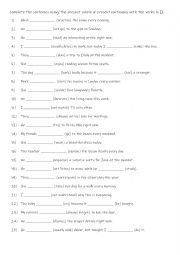
|
A2-B1 Complete the sentences using the present simple or present continuous with the verbs in bold.
students read the sentences to look for time markers to indicate what tense is required, they then complete the gap-fill using the infinitive in () and the correct tense. Answers on page 2.
Level: elementary
Age: 8-100
Type:
Downloads: 132
|
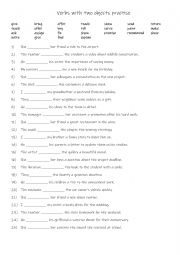
|
B1-B2 25 Ditransitive verbs are verbs with 2 objects practise Part 1
First, students familiarise themselves with the 25 ditransitive verbs. Then they read the sentences to see which verb is required to complete the sentence. Answers on page 2.
Level: intermediate
Age: 10-100
Type: worksheet
Downloads: 132
|
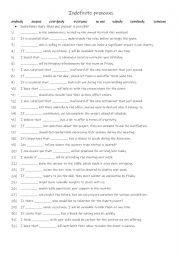
|
A2+-B1 Indefinite pronouns
Learning indefinite pronouns is important for clear communication, as they refer to nonspecific people or things, enhancing understanding in both spoken and written language without naming specific individuals. They allow students to express inclusivity, as in "Everybody is invited," and avoid repetition, keeping sentences concise and fluid. Additi...
Level: elementary
Age: 8-100
Type:
Downloads: 132
|
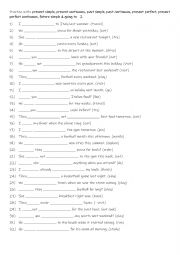
|
A2+-B1 Practise with present simple, present continuous, past simple, past continuous, present perfect, present perfect continuous, future simple & going to 2
Students should learn to practise tenses like the present simple, present continuous, present perfect simple, past simple, past continuous, will future, and going to because they are essential for expressing actions in different time frames. These tenses help students describe routines, ongoing events, past experiences, and future plans clearly and...
Level: intermediate
Age: 9-100
Type:
Downloads: 132
|
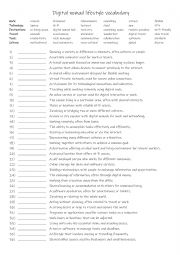
|
A2+-B1 Digital nomad lifestyle vocabulary
First, students need to familiarise themselves with the 36 words and their meanings. Then they read the definitions to see which one is being described and write that word in the space provided Answers on page 2.
Level: intermediate
Age: 10-100
Type:
Downloads: 132
|
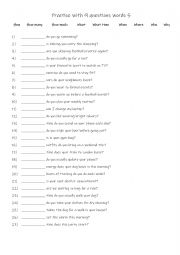
|
Practise with 9 questions words 5
Students familiarise themselves with the 9 question words and their use. Then they read the questions to see which question word is required to complete the questions. Answers on page 2.
Level: elementary
Age: 7-100
Type:
Downloads: 132
|
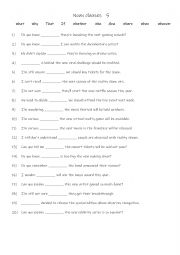
|
10 Noun clauses 5
Students complete the gap-fill with the correct word. Each word is used 2 times! Answers on page 2.
Level: elementary
Age: 10-100
Type:
Downloads: 132
|
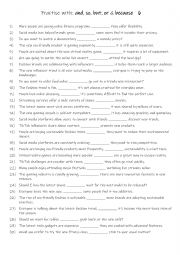
|
A1+- A2 Practise with and, so, but, or & because 6
First, students need to familiarise themselves with the 5 linkers and their usage. Then they read the sentences to see which one is needed to complete the gap-fill. Each conjunction is used 6 times! Answers on page 2.
Level: elementary
Age: 8-100
Type:
Downloads: 131
|

|
What�s the question?
The 25 sentences cover basic vocabulary, present tense verbs, and common everyday expressions, making them suitable for beginners at A1 level.
Students read the answers, then write a suitable question to get the given answer. Possible answers on page 2.
Level: elementary
Age: 10-100
Type: worksheet
Downloads: 131
|
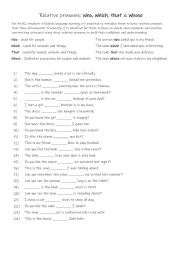
|
Relative pronouns: who, which, that & whose
For A1-A2 students in English language learning, it�s essential to introduce them to basic relative pronouns that they will encounter frequently. It�s beneficial for them to focus on simple, clear examples and practice constructing sentences using these relative pronouns to build their confidence and understanding. Answers on page 2.
Level: elementary
Age: 8-100
Type:
Downloads: 131
|
|
|
|
|












